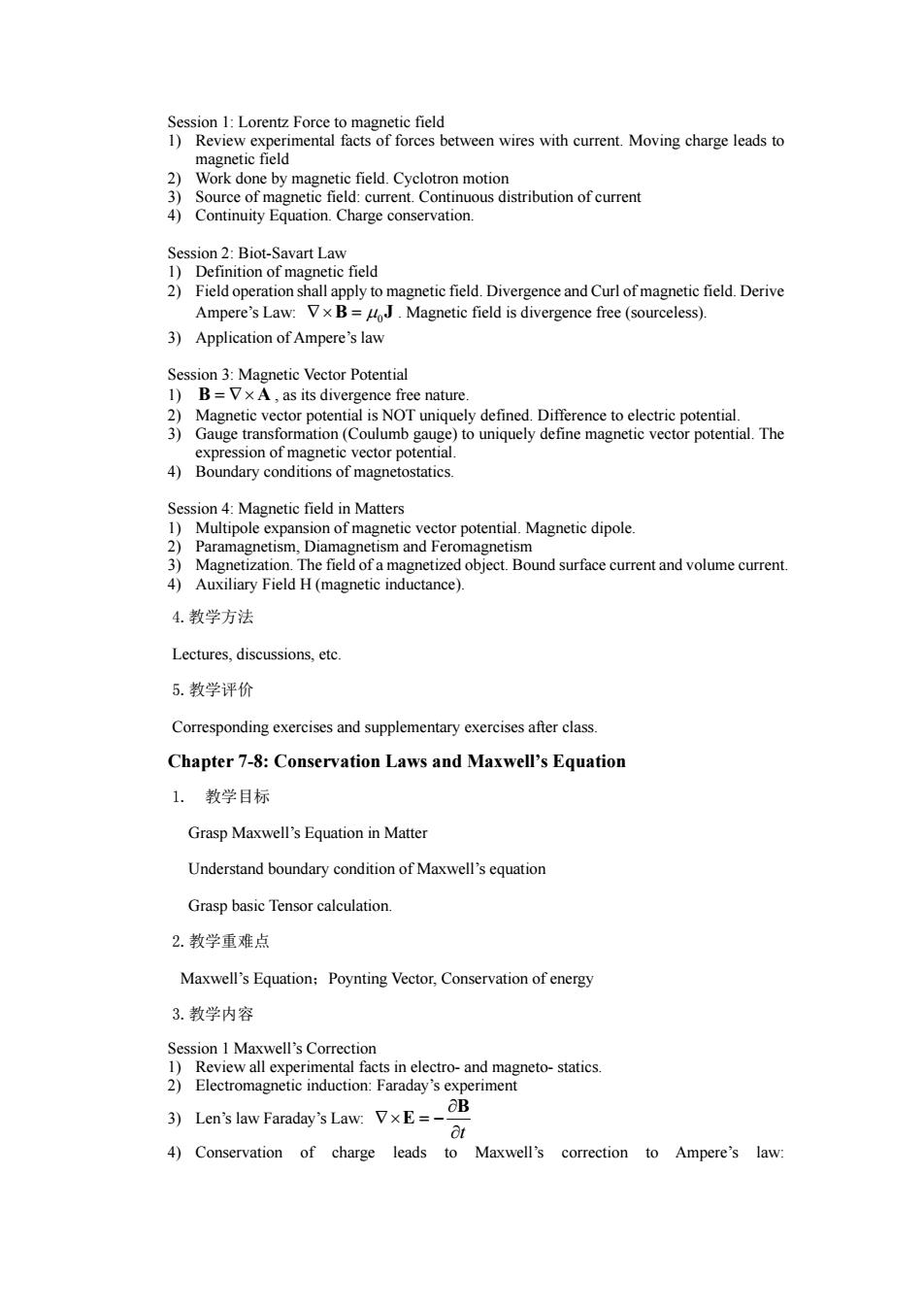正在加载图片...

ld:current arge conserat 2)Field operation shallan oly to magnetic field Divergence and Curl of magnetic field Derive AmpereMagnetie field is divergence free (sourceless) 3)Application of Ampere's law Vector Potentia as 3)Gauge transformation (Coulumb gau ge)to uniquely define magnetic vector potential.The 4) The field ofa magnetized objeet.Bound surface come ct 4.教学方法 Lectures,discussions,etc. 5.教学评价 Corresponding exercises and supplementary exercises after class Chapter 7-8:Conservation Laws and Maxwell's Equation 1.教学目标 Grasp Maxwell's Equation in Matter Understand boundary condition of Maxwell'seqution Grasp basic Tensor calculation. 2.教学重难点 Maxwell's Equation:Poynting Vector,Conservation of energy 3.教学内容 )E室 4)Conservation of charge leads to Maxwell's correction to Ampere's law.Session 1: Lorentz Force to magnetic field 1) Review experimental facts of forces between wires with current. Moving charge leads to magnetic field 2) Work done by magnetic field. Cyclotron motion 3) Source of magnetic field: current. Continuous distribution of current 4) Continuity Equation. Charge conservation. Session 2: Biot-Savart Law 1) Definition of magnetic field 2) Field operation shall apply to magnetic field. Divergence and Curl of magnetic field. Derive Ampere’s Law: B J 0 . Magnetic field is divergence free (sourceless). 3) Application of Ampere’s law Session 3: Magnetic Vector Potential 1) B A , as its divergence free nature. 2) Magnetic vector potential is NOT uniquely defined. Difference to electric potential. 3) Gauge transformation (Coulumb gauge) to uniquely define magnetic vector potential. The expression of magnetic vector potential. 4) Boundary conditions of magnetostatics. Session 4: Magnetic field in Matters 1) Multipole expansion of magnetic vector potential. Magnetic dipole. 2) Paramagnetism, Diamagnetism and Feromagnetism 3) Magnetization. The field of a magnetized object. Bound surface current and volume current. 4) Auxiliary Field H (magnetic inductance). 4.教学方法 Lectures, discussions, etc. 5.教学评价 Corresponding exercises and supplementary exercises after class. Chapter 7-8: Conservation Laws and Maxwell’s Equation 1. 教学目标 Grasp Maxwell’s Equation in Matter Understand boundary condition of Maxwell’s equation Grasp basic Tensor calculation. 2.教学重难点 Maxwell’s Equation;Poynting Vector, Conservation of energy 3.教学内容 Session 1 Maxwell’s Correction 1) Review all experimental facts in electro- and magneto- statics. 2) Electromagnetic induction: Faraday’s experiment 3) Len’s law Faraday’s Law: t B E 4) Conservation of charge leads to Maxwell’s correction to Ampere’s law: